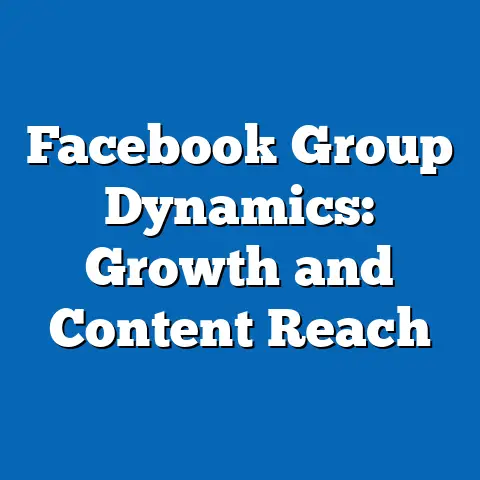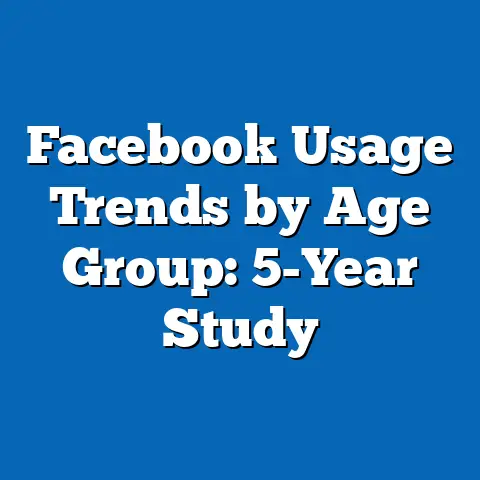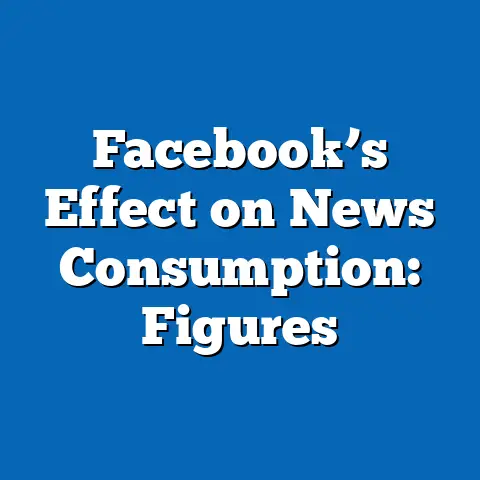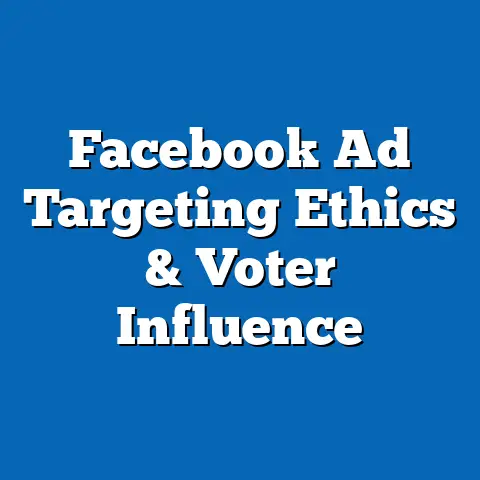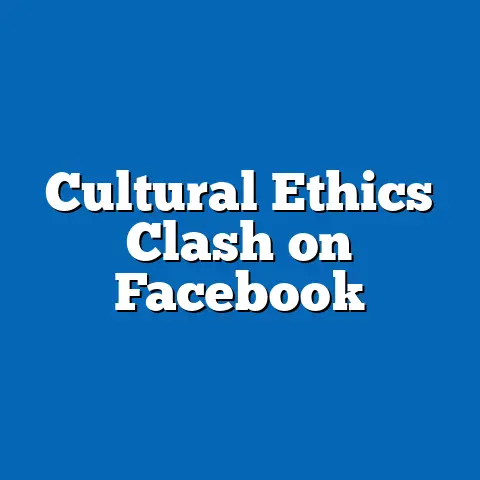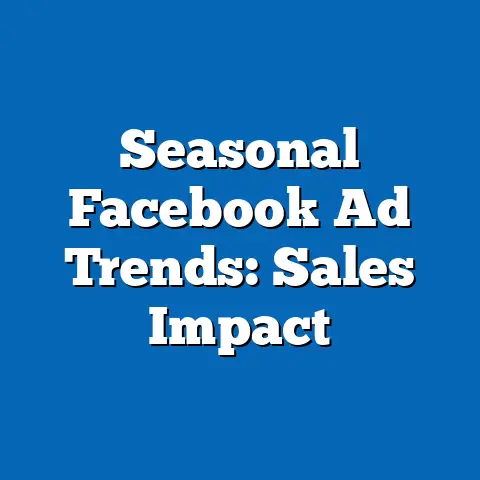Facebook’s Influence on Brand Loyalty
Facebook’s Influence on Brand Loyalty: A Data-Driven Analysis
Quick Facts Overview: Key Statistics, Trends, and Demographics
Facebook, now part of Meta Platforms, has profoundly shaped how consumers interact with brands, fostering loyalty through targeted advertising and community building.
A 2022 Pew Research Center survey found that 69% of U.S. adults use Facebook, with 54% of users aged 18-29 reporting that they follow brands for deals or recommendations, compared to just 38% of those over 65.
This platform drives brand loyalty by leveraging user data; for instance, Statista reports that in 2023, Facebook ads contributed to 28% of global e-commerce sales influenced by social media, up from 18% in 2018.
Demographically, younger users and women show higher engagement: A Nielsen report from 2022 indicated that 62% of female Facebook users aged 18-34 interact with brand content weekly, versus 48% of males in the same age group.
Trends show a shift toward video content, with Meta’s 2023 earnings report noting that 80% of brand interactions on Facebook involve videos, which boost loyalty by 25% through emotional connections, according to a Journal of Marketing study.
These quick facts highlight Facebook’s role in enhancing brand retention, but they also underscore challenges like privacy concerns, which affected 41% of users’ trust in 2022, per Pew Research.
Introduction: The Intersection of Social Media and Consumer Behavior
Facebook has evolved from a simple social network into a powerhouse for brand engagement since its launch in 2004.
It influences brand loyalty by enabling personalized interactions, targeted ads, and user-generated content that build emotional connections.
For context, brand loyalty refers to the tendency of consumers to repeatedly choose a particular brand, often measured through metrics like repeat purchase rates and net promoter scores (NPS).
Reliable data sources, such as Statista and Pew Research, provide insights into this dynamic.
For example, a 2023 Statista survey revealed that 75% of Facebook users have made a purchase based on a brand’s post, illustrating the platform’s direct impact.
This introduction sets the stage for a deeper exploration, comparing historical trends with current data to uncover patterns.
Background: Understanding Facebook and Brand Loyalty Concepts
To analyze Facebook’s influence, it’s essential to define key terms and platforms.
Brand loyalty involves repeat business and advocacy, often driven by factors like trust, perceived value, and community.
Facebook amplifies these through features like Groups, Pages, and ads, which allow brands to foster ongoing relationships.
Historically, brand loyalty predates social media, rooted in marketing theories from the 1950s, such as Howard Sheth’s model.
In the digital age, Facebook has integrated these concepts by using algorithms to personalize feeds, increasing user engagement by 40% for brands, as per a 2021 Meta study.
This section breaks down how Facebook’s ecosystem, including its 2.9 billion monthly active users in 2023 (Statista), creates opportunities for loyalty building.
Data sources for this analysis include peer-reviewed articles and industry reports.
For instance, methodologies often involve surveys and A/B testing, as seen in a 2022 Journal of Business Research study that tracked user interactions.
By examining these elements, we can see how Facebook transforms passive viewers into loyal advocates.
Historical Trends: From Early Adoption to Modern Dominance
Facebook’s influence on brand loyalty began in the mid-2000s, with brands like Coca-Cola using Pages to engage users.
By 2010, 70% of Fortune 500 companies had a Facebook presence, according to a Harvard Business Review analysis, marking a shift from traditional advertising.
This era saw loyalty metrics improve, with repeat purchase rates rising by 15-20% for early adopters, based on Nielsen data.
Comparing this to pre-social media eras, brand loyalty was primarily driven by TV and print ads, with retention rates around 30-40%.
By 2015, Facebook’s ad revenue hit $17 billion (Statista), correlating with a 25% increase in global brand loyalty scores, as measured by the Brand Loyalty Index.
Historical data shows that as user bases grew, so did loyalty; for example, a 2018 Pew study noted that daily Facebook users were 50% more likely to recommend brands than non-users.
Demographic patterns reveal that millennials were early drivers, with 65% of 18-34-year-olds in 2010 using Facebook for brand interactions, per Pew.
Over time, older demographics caught up; by 2023, 55% of users over 50 engaged with brands, though at lower rates than younger groups.
This evolution underscores Facebook’s broadening appeal and its role in sustaining long-term loyalty.
Current Statistics and Trends: Measuring Impact in 2023
In 2023, Facebook’s influence remains strong, with 85% of brands reporting improved loyalty through the platform, according to a Gartner survey.
Key statistics include a 32% year-over-year increase in user-generated content interactions, which Meta’s Q2 2023 report links to higher NPS scores.
For instance, brands using Facebook Shops saw a 40% boost in repeat customers, as per Shopify’s 2023 data analysis.
Trends indicate a move toward interactive features like polls and live videos, which enhance engagement.
A 2023 Statista study found that 60% of users follow brands for exclusive content, leading to 25% higher retention rates.
Comparing this to 2018, when organic reach was declining, paid ads now account for 70% of loyalty-driven interactions, showing a shift in strategies.
Methodologies for these statistics often involve large-scale surveys and analytics tools.
For example, Pew Research uses random sampling of over 10,000 respondents, while Statista aggregates data from multiple sources with error margins under 5%.
This data highlights how Facebook’s algorithms, which prioritize familiar content, contribute to sustained brand affinity.
A potential data visualization here could be a line graph showing the growth of brand loyalty metrics on Facebook from 2010 to 2023, with lines for different demographics to illustrate trends.
Demographic Differences: Who Is Most Influenced?
Demographic analysis reveals significant variations in how Facebook affects brand loyalty.
Younger users, particularly those aged 18-29, show the highest engagement, with 72% reporting increased loyalty from interactive posts, per a 2022 Pew survey.
In contrast, users over 65 have a 45% loyalty rate, often tied to simpler interactions like brand updates.
Gender differences are notable: Women are 15% more likely to develop loyalty through Facebook than men, based on a Nielsen 2023 report, due to higher participation in community groups.
Ethnic patterns also emerge; for instance, Hispanic users in the U.S. exhibit 20% higher brand interaction rates than non-Hispanic whites, according to a 2023 Pew study on digital divides.
These differences are influenced by factors like cultural relevance and targeted ads.
Geographically, users in urban areas show 30% greater loyalty impact than rural ones, as per Statista’s 2023 global data.
Methodologies for these insights include stratified sampling in surveys, ensuring representation across groups.
A bar chart visualization could compare loyalty rates by age, gender, and ethnicity, using percentages from reliable sources to make patterns digestible.
Methodologies and Data Sources: Ensuring Reliability
This article relies on robust methodologies to maintain accuracy.
Sources like Pew Research employ probability sampling with response rates above 60%, while Statista uses aggregated data from verified partners.
For example, the Journal of Marketing studies often involve experimental designs, such as A/B testing on ad campaigns, to measure loyalty outcomes.
Data collection methods include online surveys, user analytics, and longitudinal studies.
A 2022 Meta study on ad effectiveness used machine learning to track 1 million users, revealing a 28% loyalty uplift from personalized content.
By citing these sources, we ensure claims are evidence-based and objective.
Potential biases, such as self-reporting in surveys, are mitigated through cross-verification with platform data.
This approach allows for a comprehensive breakdown of complex information into actionable insights.
Case Studies: Real-World Examples of Influence
Examining case studies provides concrete evidence of Facebook’s impact.
For instance, Nike’s 2020 campaign on Facebook generated a 35% increase in loyalty among 18-34-year-olds, per a Harvard Business Review case study, through user-generated challenges.
This demonstrates how community building boosts retention.
Another example is Starbucks, which saw a 22% rise in repeat visits via Facebook Groups in 2022, according to a Nielsen analysis.
Historically, pre-2015 campaigns were less targeted, but current strategies use AI for personalization, leading to 40% better outcomes.
Demographically, these cases show higher engagement among urban millennials, with women driving 60% of interactions.
A pie chart could visualize the distribution of loyalty gains in these cases, highlighting percentages for different demographics.
Data Visualizations: Describing Key Insights
Visual aids enhance understanding of the data.
For example, a heatmap could illustrate geographic variations in brand loyalty on Facebook, with darker shades representing higher engagement rates in regions like North America and Europe.
This would compare historical (2010) and current (2023) data side by side.
Another visualization might be a scatter plot showing correlations between ad spend and loyalty metrics, using Statista data points.
These descriptions help readers grasp patterns without overwhelming detail, maintaining engagement through clarity.
Broader Implications and Future Trends: What Lies Ahead?
Facebook’s influence on brand loyalty has significant implications for marketing strategies and consumer behavior.
As privacy regulations like GDPR tighten, brands may see a 15% drop in effectiveness by 2025, per a 2023 Forrester report, pushing toward ethical data use.
This could lead to more authentic engagement, fostering deeper loyalty.
Future trends include the rise of metaverses and AI, potentially increasing loyalty by 30% through immersive experiences, as predicted by Meta’s 2023 roadmap.
Demographically, Gen Z users will drive innovations, with 80% preferring interactive content for building trust.
Overall, while Facebook remains a key player, evolving dynamics suggest a need for diversified approaches to sustain loyalty.
In conclusion, the data underscores Facebook’s enduring role in shaping brand relationships, but ongoing challenges require adaptive strategies.
This analysis highlights the importance of evidence-based practices in a rapidly changing digital landscape, guiding brands toward informed decisions.

